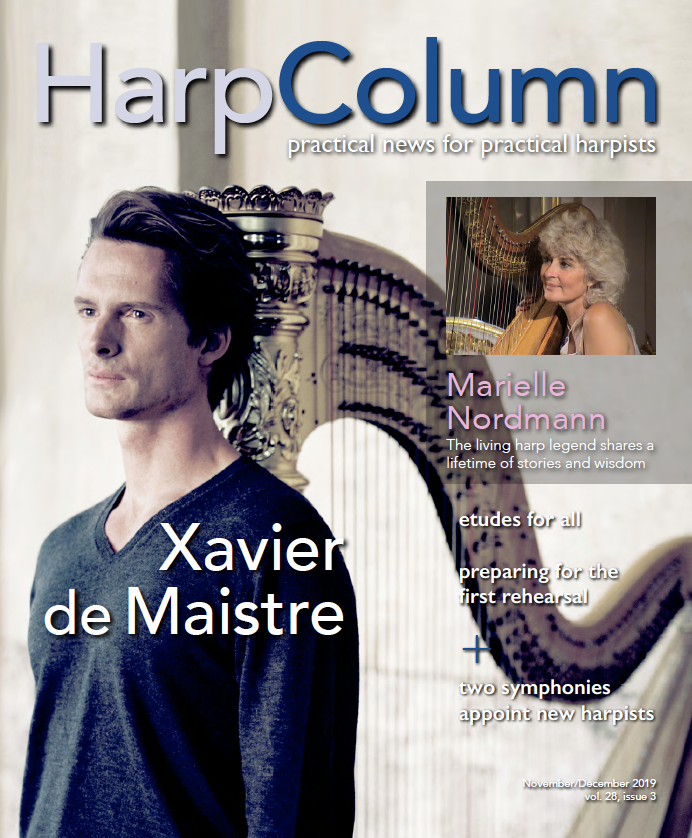For students, learning to listen outside of their own playing is what I find to be the most difficult aspect of learning to use a metronome. For this reason, I like to begin teaching them to use the metronome by training them to use it by bouncing a ball or clapping their hands, simply to get them accustomed to matching the click of the metronome. Then we use the metronome with some very simple scales, so that they can take this listening skill and put it to use while they’re actually playing. It’s important to use something that’s very simple to play at first, so they’re not concentrating on getting the right notes or the correct fingering, but can concentrate on listening to the metronome. Once they develop the skill of matching the metronome, then it is no longer something they need to fear but becomes a very helpful tool.
—Anne Sullivan is a harpist, teacher, blogger, and the chief Harp Happiness Expert at Harpmastery.com from Coburn, Pa.
Ialways tell my students the metronome will become your best friend if you use it correctly! Do not be afraid to start young students with metronomes right away. If they’re very little, I will assign two to three minutes of practice time with the metronome to avoid discouragement or avoidance. Students avoid metronomes when they do not understand how to use them as tools. It is possible to understand the rhythm, but not how to relate to the click. The remedy is teaching them to correctly identify which notes will occur with the sound and which ones will not. Teach how to “anticipate” the beat: to correctly predict the next event in a sequence.
Some of my students have benefited from using clip on metronomes that buzz instead of producing an audible beat. If your student is overwhelmed, focus on lining up one phrase, or even half of a phrase. We will spend most of a lesson on two to three measures tapping, clapping, walking, and counting along with the metronome. Lastly, praise them when they try! Effort must be matched with reward—even with advanced students and adults.
—Erica Driscoll is a freelance harpist and teacher at Phillips Exeter Academy, St. Paul’s Academy, Southern New Hampshire University, and the Manchester Community Music School in Manchester, N.H.
The metronome is everywhere: in a clock ticking seconds which are always stable, or heartbeats, which are different. But what if we need to create a particular tempo? Imagine yourself listening to your favorite rhythmical music. It doesn’t matter if it is hip-hop or electronic. Your head and feet follow the groove, which is ideally clear and the same. That is precisely the feeling you should get when counting the tempo in your performance, and, to get that stability, we should use the metronome. So, the deal is straightforward: you pick your rhythm, playing several bars with the clicks. Can you now repeat in exact tempo, keeping the beat? That is your goal. If playing with the metronome is still a problem, you should switch to basic rhythm exercises, like clapping, knocking, and doing different rhythms.
Rhythm should be everywhere—whether exercise or performance—even if the music is rubato or romantic. Using the metronome little by little, you create your organic metronome right in your stomach. This will help you to maintain your tempo in every situation. •
—Alexander Boldachev is an official artist of Salvi Harps, composer, arranger, invited artist of the Bolshoi Theatre, and general producer of the Zurich Harp Festival and Golden Harp competition in Zurich, Switzerland















